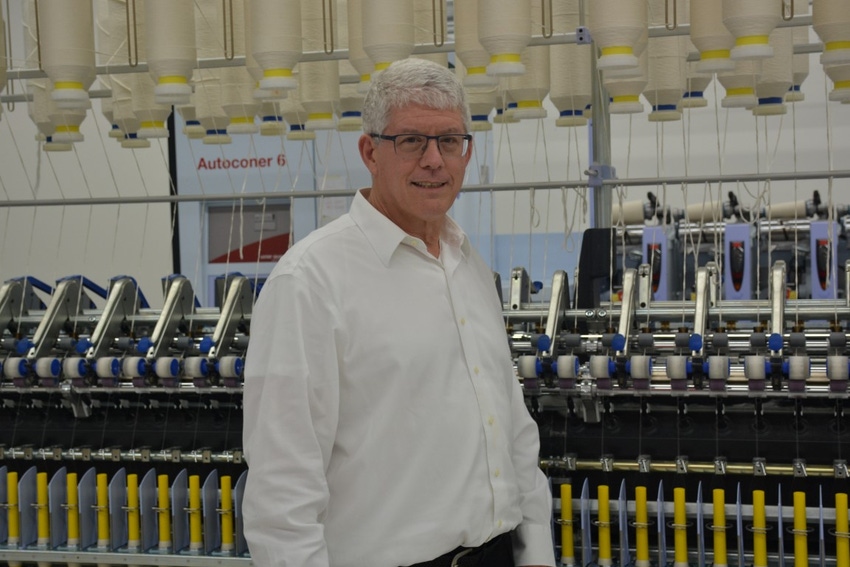
Southeast cotton: High fiber quality varieties show promise for growers in 2016
As farmers look for cotton varieties that will perform well on their farms this year, they would be well advised to plant some of their acreage to the varieties with high fiber quality, if they have the management capabilities to produce top quality cotton.
January 21, 2016

For the past two years or more, all of the U.S. cottonseed companies have provided upland cotton varieties that offer extremely high fiber quality, which is certainly good news for U.S. cotton farmers.
As farmers look for cotton varieties that will perform well on their farms this year, they would be well advised to plant some of their acreage to the varieties with high fiber quality, if they have the management capabilities to produce top quality cotton, says Kater Hake, vice president of agricultural and environmental research at Cotton Incorporated.
“All of the companies now have upland varieties with staple length of 38, 39 and 40. These ae upland staple lengths that were unheard of in upland cotton only a few years ago. These varieties have outstanding length and strength,” Hake said in an interview with Southeast Farm Press at Cotton Incorporated’s world headquarters in Cary, N.C.
In fact, Hake said, upland varieties are now approaching Pima varieties in terms of fiber quality. And the good news for farmers is that these new high quality upland varieties also yield well and are suitable for all U.S. cotton producing regions, Hake stressed.
Hake said cotton farmers who are looking to make a profit in a very difficult 2016 should consider planting some of their acreage to one of these new high fiber quality varieties and then manage what they plant for quality.
“Growers have to be thinking not just about yield, yield, yield and yield and avoidance of discounts, but think about whether there are some opportunities to get premiums by going for very high quality cotton,” Hake said.
Farmers who plant high quality upland varieties will be going after two established markets: Australian cotton and San Joaquin Valley Acala. Due to drought and the return of La Nina in 2016, Hake said there will be a tight market for Australian cotton and San Joaquin Valley Acala this year.
“This would be a good year for farmers to put some of their acreage into varieties with high quality varieties, if they believe they can deliver on all of the quality parameters. A farmer can make some nice premiums on high quality cotton, but only if all of the parameters come together,” Hake said.
Avoid high leaf trash
Avoiding high leaf trash and both very high and very low micronaire is critical, Hake stressed. “If you’re going for the quality market, there is very little tolerance for any of the quality factors being below expectations,” he said.
As a service to the industry, Cotton Incorporated tests both experimental and commercial cotton lines, actually spinning the different varieties and developing yarn. This has made Cotton Incorporated well aware of high fiber quality of the various varieties, Hake said.
“Not only do these new varieties look really good on HVI (high volume instrumentation), but we take them all the way through spinning and yarn production at no cost to the industry. We know that the companies have varieties that generate very nice yarn. We now have seen enough of these high quality varieties out in the marketplace that their value by the textile industry is getting clear.”
Hake explains that textile companies pay a premium for high quality cotton to “sweeten the mix” by combining high quality fiber with lower quality fiber to produce finer count yarns and high quality products and improve the overall spin ability of lower quality cotton.
In the meantime, Ed Barnes, senior director of agricultural and environmental research at Cotton Incorporated, advises farmers to manage premium varieties differently than conventional varieties. “Make sure it is planted on time and harvested on time. And if you irrigate, you want to make sure you irrigate your premium varieties. It is important to take steps to avoid any contamination,” he said.
“There is a shortage of high quality cotton on the world market, and there are real opportunities for farmers to get paid for quality,” he added.
Hake also stresses the importance of planting on time and harvesting on time. He also advises farmers to select fields that are uniform and avoid fields with a history of plastic in the fields. And he adds, “Choose fields that don’t have a known potassium deficiency problem. Low potassium destroys fiber quality,” he said.
You May Also Like



